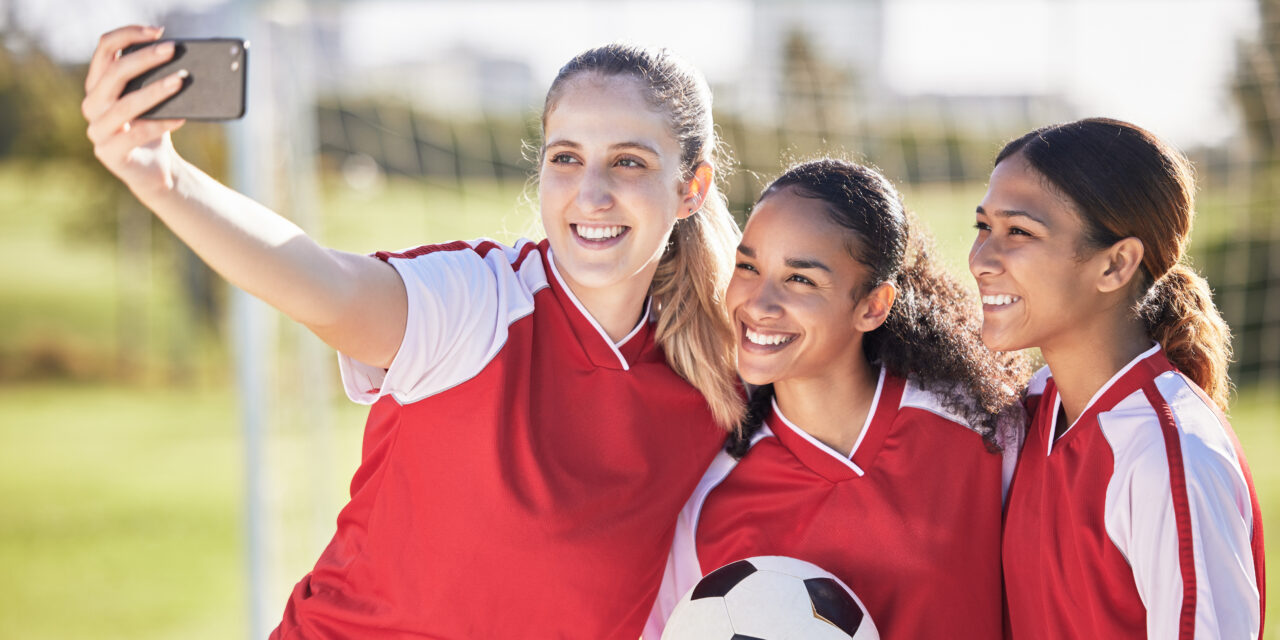Social media isn’t just about connecting with friends and family during your free time—it also serves as a powerful professional communication tool. Platforms like Instagram, Twitter (X), Facebook, and LinkedIn offer opportunities to educate student-athletes, promote program successes, and build relationships with the broader community.
The Value of Social Media in High School Athletics
1. Amplifies The Reach of Athletics
Social media allows athletic directors to promote their programs beyond the confines of the school halls. Highlighting victories, sharing photos from games, and recognizing athletes builds a wider sense of community pride.
2. Strengthens Community Engagement
A consistent and engaging social media presence helps parents, alumni, and local supporters feel more connected to the program. Celebrating athletes, hosting live updates, and sharing behind-the-scenes content can turn spectators into lifelong supporters.
3. Recruits and Retains Talent
An active, positive social media presence attracts prospective students and reinforces the participation of current ones. Whether it’s spotlighting an athlete’s success or showcasing new facilities, social media makes your program more sought after.
4. Attracts Sponsors and Partnerships
Businesses look to support programs with strong visibility. An active social media presence demonstrates professionalism and reach, making your program more attractive to potential sponsors. Social media platforms also provide the tools to produce sponsored content.
The Role of Authenticity in Social Media
One of the most effective ways to build trust is by being authentic. Your audience doesn’t want perfection—they want reality. Authenticity humanizes your role as an athletic director and makes your audience feel like they’re part of the journey. Share the genuine moments that make your program unique:
- Spotlight athletes’ stories beyond the wins and losses.
- Show the effort behind the scenes—from setting up for games to coaches motivating their teams.
- Celebrate challenges and how your program overcomes them.
Maintain Professionalism
Your social media presence reflects your professionalism—keep that in mind without sacrificing your authenticity. Share moments that align with your role as a leader and mentor. Avoid oversharing personal information or venting frustrations publicly.
- Steer clear of unnecessary controversy and be respectful of other people’s opinions.
- Avoid inappropriate language and imagery.
- Represent your school with pride.
Share High-Value Content
Every post serves a purpose—whether it’s informing, celebrating, or inspiring. Examples include:
- Game schedules and live updates
- Athlete and coach spotlights
- Facility improvements or fundraisers
- “Day in the Life” features of student-athletes or teams
Communicate With Your Audience
Social media is a two-way street. Respond to comments, answer questions, and promote others’ achievements. The more involved your audience feels, the more they’ll endorse you and your program.
Consistency Is Key
Consistency builds rapport and keeps your audience engaged. Whether you post daily, weekly, or bi-weekly, sticking to a consistent schedule helps gain traction.
Highlight Student-Athlete Success
Celebrating individual and team achievements shows off the fruit of your labor—whether it’s a new personal best in the weight room or an academic milestone. Ensure you receive parental consent before posting photos or names of students. Social media also offers the perfect platform to reveal new equipment or facilities.
Follow School Policies And Guidelines
Familiarize yourself with your school district’s social media policies. Some districts have strict guidelines about posting photos of students or using school logos.
Use Metrics to Guide Strategy
Track engagement metrics—likes, shares, and comments—to understand what resonates. Use this data to refine your content strategy.
Best Practices for Different Platforms
- Instagram: Showcase visuals—game highlights, team celebrations, and event promotions.
- Twitter (X): Quick updates, information, and links to other content.
- Facebook: Connect with parents and the local community with event recaps and fundraisers.
- LinkedIn: Offer professional insights, connect with other coaches, and establish credibility within the athletics and academic communities.
The Benefits Of Social Media
Social media is a powerful tool for high schools. By approaching it with a clear strategy, a professional tone, and a focus on value-driven content, you can create an online presence that inspires athletes, educates parents, and elevates your program’s reputation. Start small, stay consistent, and let your passion for athletics shine through every post! With the right approach, your program’s influence can grow both online and offline.










